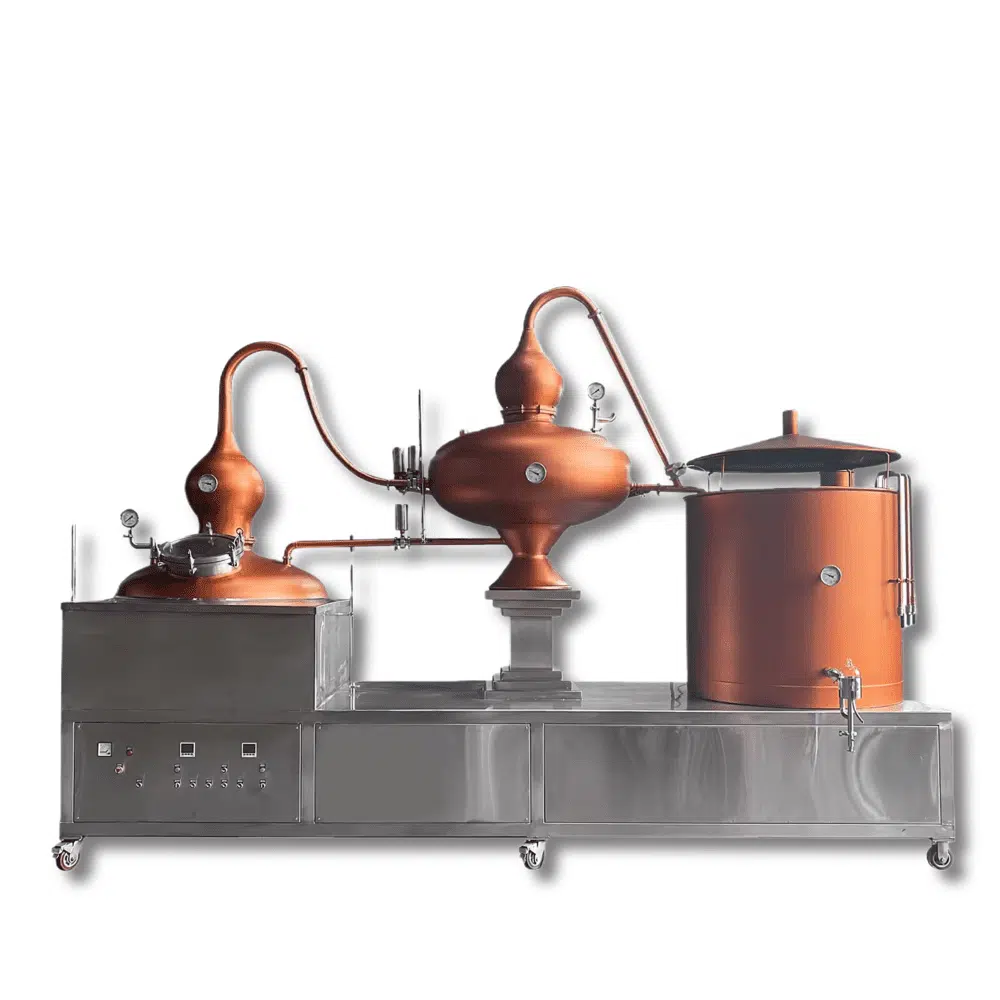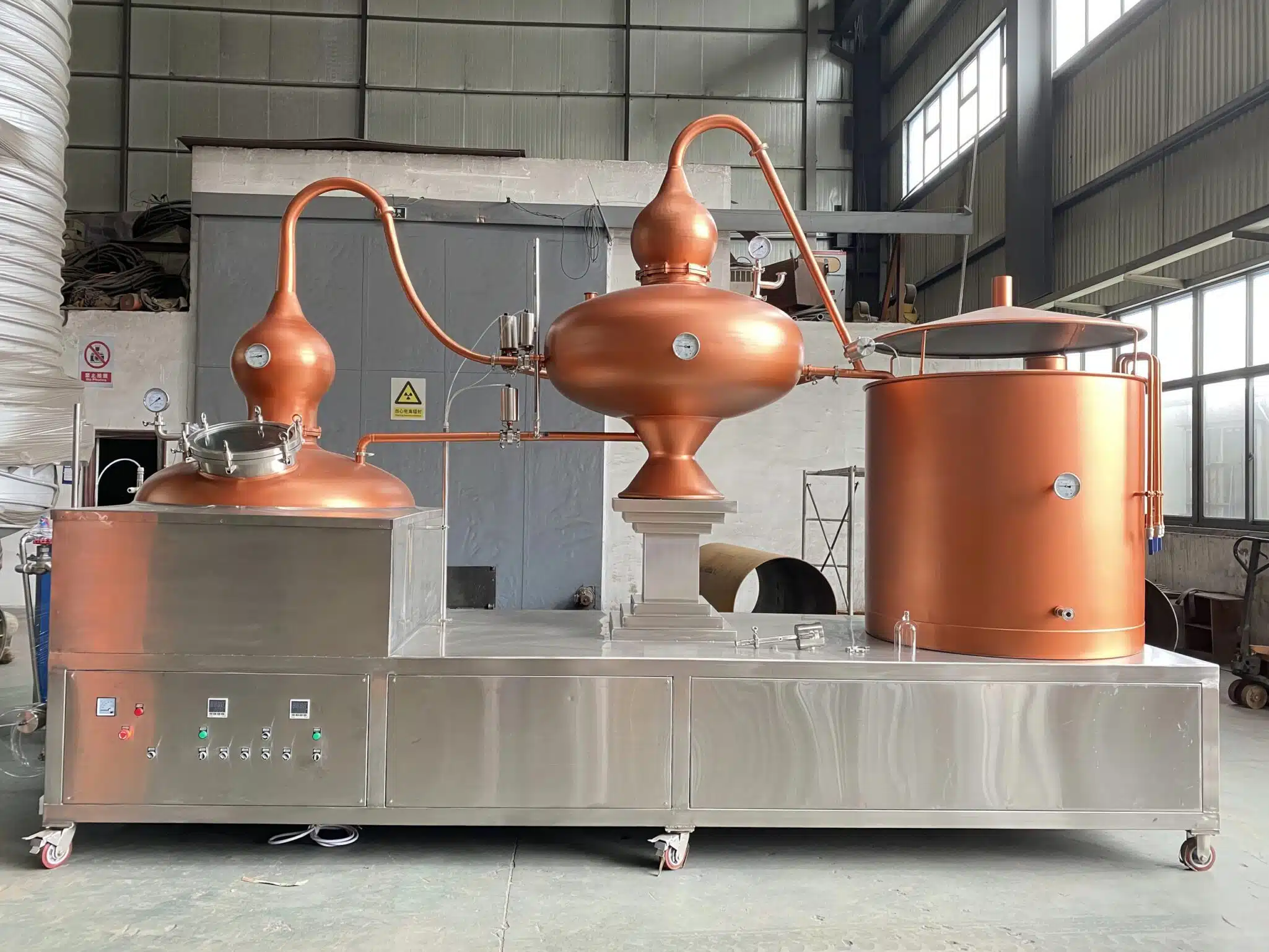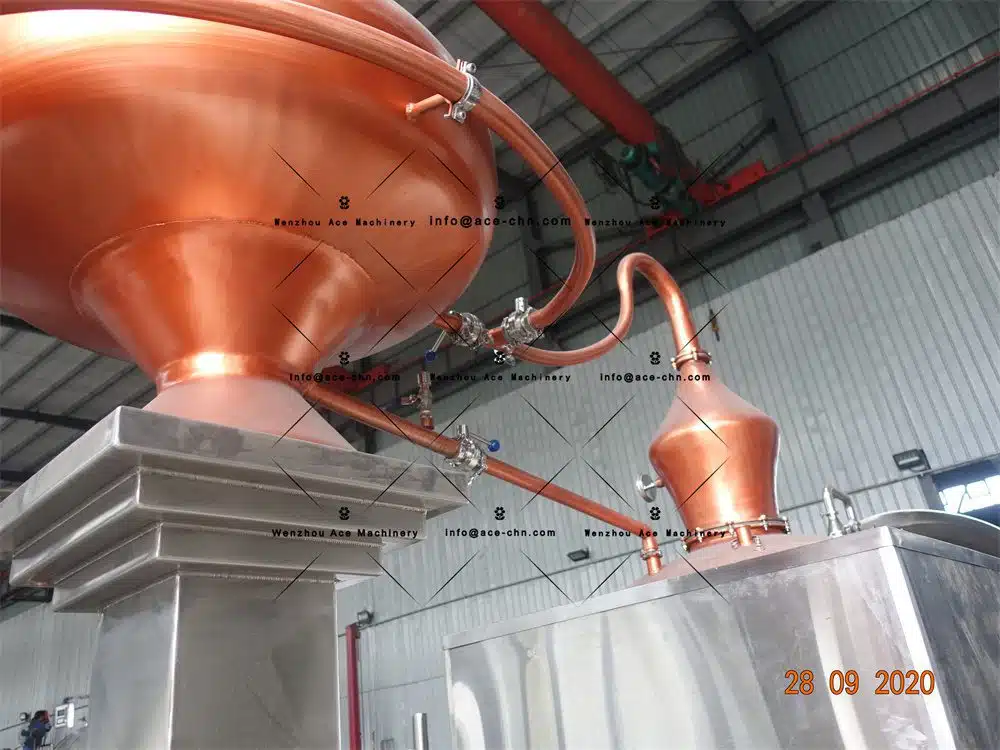The main components of a charentais alembic still include the boiler, the swan neck, the condenser, and the pre-heater.
Each of these components plays a crucial role in the distillation process:
- The boiler is where the raw material, usually a fermented grape mash, is heated.
- The swan neck is a pipe that connects the boiler to the condenser. It’s designed to allow the vapor to rise and travel to the condenser.
- The condenser is where the vapor is cooled and condensed back into a liquid.
- The pre-heater is a unique feature of the charentais alembic still.
The Distillation Process Using a Charentais Alembic Still
The distillation process using a charentais alembic still is a meticulous and time-honored tradition. It begins with the preparation of the raw material, usually a fermented grape mash. This mash is then loaded into the boiler of the still.
The boiler is heated, causing the alcohol in the mash to evaporate. This vapor travels up the swan neck and into the condenser, where it is cooled and condensed back into a liquid. This liquid, known as the distillate, is collected and set aside.
The distillation process using a charentais alembic still is unique in that it involves two stages. The first distillation, known as the “rough distillation,” produces a liquid with an alcohol content of about 28-32%. This liquid is then distilled a second time in a process known as the “good distillation.”
The good distillation is where the magic happens. The distiller must carefully monitor the temperature and make precise cuts to separate the heads, hearts, and tails.





